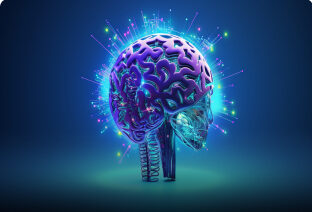Cloud computing has transformed the way businesses operate, enabling scalable, flexible, and cost-effective solutions for data storage, computing power, and application deployment. If you’re wondering how to get started in this exciting and in-demand field, you’re not alone.
Whether you’re a student, an IT professional, or a career switcher, here’s a step-by-step guide to launching your journey into cloud computing.
1. Understand What Cloud Computing Is
Before diving in, get familiar with the basics. Cloud computing is the delivery of computing services—including storage, databases, networking, software, and analytics—over the internet.
Key Cloud Service Models:
-
IaaS (Infrastructure as a Service): Rent virtual servers, networks, and storage.
-
PaaS (Platform as a Service): Build and deploy applications without managing infrastructure.
-
SaaS (Software as a Service): Use software applications hosted by providers (e.g., Gmail, Salesforce).
Major Cloud Providers:
-
Amazon Web Services (AWS)
-
Microsoft Azure
-
Google Cloud Platform (GCP)
2. Start with the Basics
Begin with foundational cloud concepts such as:
-
Virtual machines
-
Cloud storage
-
Networking in the cloud
-
Security and compliance
Suggested Resources:
-
AWS Cloud Practitioner Essentials
-
Google Cloud Digital Leader Training
-
Microsoft Azure Fundamentals (AZ-900)
These beginner certifications are a great entry point with no prerequisites.
3. Choose a Cloud Platform
While it’s helpful to be familiar with multiple platforms, start with one major provider to build hands-on skills. AWS, Azure, and GCP all offer free tiers to practice.
For beginners:
-
AWS Free Tier: Try services like EC2, S3, and Lambda
-
Azure Free Account: Get $200 credit and 12 months of free services
-
GCP Free Tier: $300 credit and access to key services
4. Get Hands-On Experience
Nothing beats practical experience. Set up your own cloud projects like:
-
Hosting a personal website
-
Deploying a web app using containers
-
Setting up a virtual network
5. Earn Cloud Certifications
Certifications validate your skills and make your resume stand out. Popular beginner certifications include:
-
AWS Certified Cloud Practitioner
-
Microsoft Azure Fundamentals (AZ-900)
-
Google Cloud Digital Leader
Later, consider advanced certifications like:
-
AWS Solutions Architect
-
Azure Administrator Associate
-
Google Associate Cloud Engineer
6. Join a Community
Connect with other learners and professionals to stay updated and motivated. Join:
-
Reddit’s r/cloudcomputing
-
Discord/Slack channels for cloud enthusiasts
-
LinkedIn groups or cloud meetups
Open-source contributions and community forums also enhance learning and exposure.
7. Keep Learning
Cloud technology evolves quickly. Stay current by:
-
Following cloud blogs and YouTube channels
-
Attending webinars and conferences
-
Experimenting with new tools and services
Final Thoughts
Getting started in cloud computing doesn’t require a computer science degree—just curiosity, dedication, and consistent learning. Begin with the fundamentals, gain practical experience, and gradually build expertise through certifications and projects.










